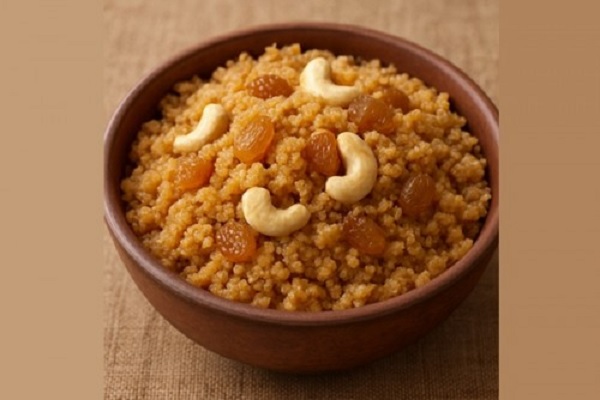Rajgira Shira: A Nutritious and Delicious Traditional Indian Breakfast

Rajgira, commonly called amaranth, is a tiny grain-like seed renowned for its exceptional nutritional profile. It is a gluten-free pseudocereal packed with protein, fiber, vitamins, and minerals such as calcium, iron, and magnesium. Because of its high protein content and easy digestibility, rajgira is especially favored during fasting in India.
Ingredients and Preparation
The basic ingredients for Rajgira Shira include:
Rajgira seeds (amaranth)
Ghee (clarified butter)
Jaggery or sugar (to sweeten)
Water or milk
Cardamom powder (for flavor)
Nuts and dry fruits (cashews, almonds, raisins) for garnish
Preparation Steps:
Roast Rajgira: The raw amaranth seeds are lightly roasted to enhance their flavor.
Cooking: The roasted seeds are cooked in water or milk until they become soft and form a porridge-like consistency.
Sweetening: Jaggery or sugar is added to sweeten the dish naturally.
Tempering: Ghee is heated separately, and nuts along with cardamom powder are sautéed and then mixed into the cooked shira.
Serving: The warm Rajgira Shira is served immediately, often garnished with dry fruits for added texture and nutrition.
Health Benefits of Rajgira Shira
Rich in Protein: Rajgira contains all nine essential amino acids, making it a complete protein source—beneficial for muscle repair and growth.
Gluten-Free: Ideal for people with gluten intolerance or celiac disease.
High Fiber Content: Helps in digestion and promotes a healthy gut.
Low Glycemic Index: Good for blood sugar regulation.
Rich in Minerals: Calcium in rajgira supports bone health, while iron helps prevent anemia.
Energy Booster: The combination of complex carbs and proteins provides sustained energy release.
Cultural Significance
Rajgira Shira is traditionally consumed during fasting days (vrat) in Hindu culture, especially during festivals like Navratri and Shivratri. It is considered sattvic (pure) food, which means it is light on the digestive system and helps maintain energy without compromising the fast.
In many regions, this dish is also served to young children and elderly people due to its easy digestibility and nutrient density.
Variations
Depending on regional preferences and availability, Rajgira Shira recipes may vary slightly. Some use milk for a richer taste, while others prefer water to keep it light. Sweeteners can range from jaggery, raw sugar, to honey. Additionally, people may add spices like saffron or nutmeg to enhance the flavor.
Conclusion
Rajgira Shira is more than just a tasty meal—it’s a powerhouse of nutrition wrapped in tradition. Whether you’re observing a fast, looking for a healthy breakfast, or simply want to try an authentic Indian delicacy, this humble dish offers a perfect blend of taste and wellness. Next time you want to nourish your body and soul, try making Rajgira Shira at home—your body will thank you!




.jpg)















